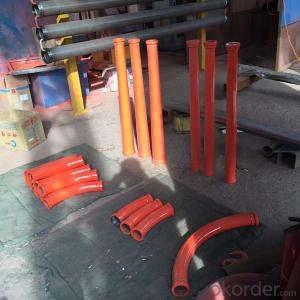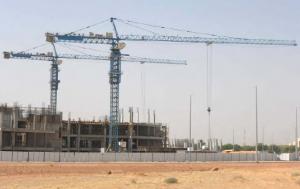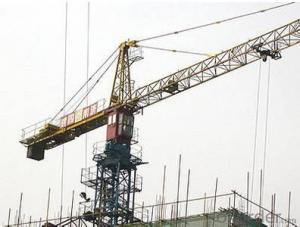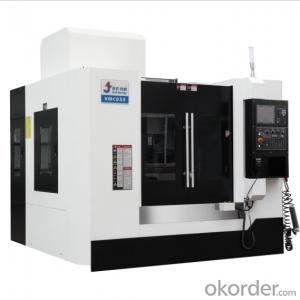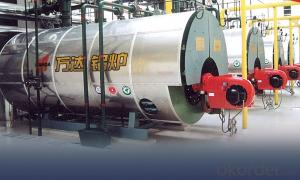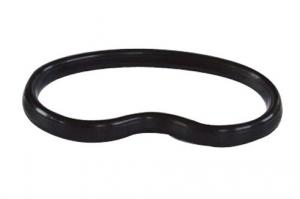Concrete Pump Spare Parts Delivery Bend 45 Degree
- Loading Port:
- Tianjin
- Payment Terms:
- TT OR LC
- Min Order Qty:
- 20 pc
- Supply Capability:
- 2000 pc/month
OKorder Service Pledge
OKorder Financial Service
You Might Also Like
Concrete Pump Spare Parts Delivery Bend 45 Degree
1. Structure of Concrete Pump Spare Parts Delivery Bend 45 Degree:
Concrete Pump Spare Parts Delivery Bend 45 Degree is used on concrete pump pipeline for concrete delivery which is much bigger than concrete elbows. It is made by St52 seamless pipe. Now its main structure is as follows;
Material: ST52, 45Mn2 etc.
Flange: ZX, F/M elbow
Size: DN125 etc.
Working Capacity: 25000-45000cbm
Degree: 90, 60, 45, 30 etc.
2. Main Features of Concrete Pump Spare Parts Delivery Bend 45 Degree:
• High Wear-resistant, long service life, lower cost
• In case of quality problem the company provide free replacement.
• Provide technical support for free.
• Provide consumers with regular visits
• Ensure the supply of ancillary parts
• Our company passed the ISO9000 certification, the product through 3C certification in full compliance with national standards.
3. Concrete Pump Spare Parts Delivery Bend 45 Degree Images:

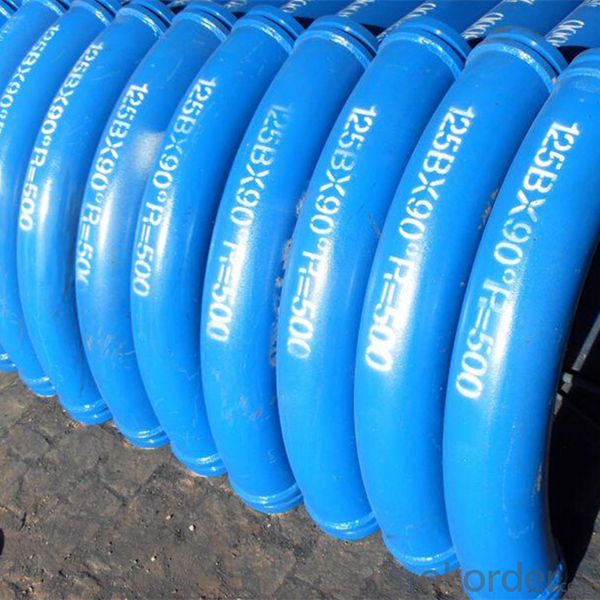

4. Concrete Pump Spare Parts Delivery Bend 45 Degree Specification:
Name | Concrete pump clamp coupling/elbow/pipe/spare parts/gasket |
Standard | Schwing, Putzmeister, Kyokuto, Cifa, Sany, Zoomlion. |
Type | 90O, 60O, 45O,11.5O DN125 {5”}--DN150(6") |
Radius | R275, R180 R320 |
Material | Hi-Mn13,ST52(16Mn), 45Mn2,45#steel and so on |
Usage | Used in Concrete Pump outlet in Construction Work Fit to Schwing and PM, Sany, Zoomlion, Cifa etc.), which include delivery pipe, elbow, reducer, coupling(clamp), male and female flange, rubber hose, cleaning ball, wear plate etc. Welcome to contact us for more information. |
finish | Painting, Epoxy or Galvanization |
Package | Wooden boxes |
5. FAQ:
We have organized several common questions for our clients, may help you sincerely:
①Is your products exported a lot?
We have exported to many, many countries. Every year we ship more than 30 containers of these spare parts. Our main market is in Middle-east, Asia & Africa.
②How to guarantee the quality of the products?
We have established the international advanced quality management system,every link from raw material to final product we have strict quality test;We resolutely put an end to unqualified products flowing into the market. At the same time, we will provide necessary follow-up service assurance.
③How long can we receive the product after purchase?
In the purchase of product within three working days, we will arrange the factory delivery as soon as possible. The specific time of receiving is related to the state and position of customers. Commonly 15 working days can be served.
- Q:How often should hydraulic cylinders be inspected or replaced in a concrete pump?
- Hydraulic cylinders in a concrete pump should be inspected regularly, ideally every 6 to 12 months, to ensure their proper functioning. Replacement of hydraulic cylinders should be done only when necessary, such as in cases of significant wear and tear, severe damage, or if they fail to meet safety standards.
- Q:How can the concrete pump be installed and used?
- Concrete conveying pipe joints should be sealed tightly, pipe should be firmly connected. The vertical pipe shall be no less than 10m horizontal pipe with check valve. The vertical pipe shall not be attached directly to the outlet of the concrete pump.
- Q:What are the signs of a damaged concrete pump S valve?
- Indications of a damaged S valve in a concrete pump include leakage, reduced pumping efficiency, increased pressure, unusual noises, difficulty in switching directions, and inconsistent concrete flow. If any of these signs are observed, it is crucial to promptly address the issue to prevent further damage and ensure the safe and efficient operation of the pump. Seeking professional assistance or referring to the manufacturer's guidelines is advised for accurate diagnosis and repair of the S valve.
- Q:What are the fittings of concrete pump?
- Hydraulic oil, eye plates, cutting rings (when the equipment reaches 5000 or more sides can be prepared) and so on
- Q:What are the safety measures to consider while replacing concrete pump spare parts?
- When replacing concrete pump spare parts, there are several safety measures that should be considered to ensure the safety of the workers and the overall success of the replacement process. 1. Lockout/Tagout: Before starting any maintenance or replacement work, it is crucial to follow proper lockout/tagout procedures. This involves isolating the equipment from its power source and placing lockout devices to prevent accidental startup. This ensures that the equipment cannot be operated while replacement work is being carried out. 2. Personal Protective Equipment (PPE): Workers involved in the replacement process should wear appropriate PPE such as safety goggles, gloves, hard hats, and steel-toed boots. This protects them from potential hazards like flying debris, falling objects, or accidental contact with sharp edges. 3. Equipment Inspection: Before commencing the replacement, the equipment should be thoroughly inspected to identify any potential hazards or defects. This includes checking for damaged or worn-out parts, loose connections, or any signs of deterioration. If any issues are found, they should be resolved or repaired before proceeding with the replacement. 4. Proper Lifting Techniques: Concrete pump spare parts can be heavy and bulky, so it is essential to use proper lifting techniques to prevent musculoskeletal injuries. Workers should be trained on lifting techniques and should use mechanical aids like cranes, hoists, or forklifts when necessary. Additionally, team lifting should be employed when dealing with heavy or awkwardly shaped parts. 5. Secure Work Area: The work area should be properly secured to prevent unauthorized access and ensure the safety of workers. Barricades or caution tape can be used to cordon off the area and warn others of the ongoing replacement work. Adequate lighting should also be provided to ensure clear visibility. 6. Proper Tools and Equipment: Using the right tools and equipment is crucial for safe and efficient replacement work. Workers should be trained on the proper use of tools and ensure that they are in good working condition. Using damaged or faulty tools can lead to accidents or improper installation of the spare parts. 7. Follow Manufacturer's Instructions: It is important to follow the manufacturer's instructions and guidelines for replacing concrete pump spare parts. This includes understanding the correct sequence of steps, torque requirements, and any special precautions that need to be taken. Deviating from the manufacturer's instructions can compromise the safety and performance of the equipment. By following these safety measures, the risk of accidents, injuries, or equipment damage can be minimized during the replacement of concrete pump spare parts. It is crucial to prioritize safety at all times and ensure that all workers involved are properly trained and equipped to carry out the replacement work.
- Q:What are the signs of a malfunctioning concrete pump control valve?
- There are various indications that a concrete pump control valve is malfunctioning. Some of the most frequently observed signs are as follows: 1. Concrete flow inconsistency or unevenness: A malfunctioning control valve can cause concrete to flow in an irregular manner, resulting in uneven distribution or even complete cessation of flow. 2. Fluctuating pressure: When the control valve is not functioning properly, it can cause pressure fluctuations in the concrete pump. This can lead to inconsistent output and potential damage to the pump or other components. 3. Heightened noise levels: An improperly functioning control valve can generate unusual or excessive noise during operation. This may indicate internal issues or improper valve functioning. 4. Leakage or dripping: The presence of leaks or drips around the valve or its connections is another indication of a malfunctioning control valve. This can suggest seal failure or other problems that require attention. 5. Difficulties in pump control: When the control valve is not operating correctly, it can become challenging to control the pump's operations. This can include problems with starting or stopping the pump, as well as controlling the speed and direction of concrete flow. 6. Increased energy consumption: A malfunctioning control valve may result in heightened energy consumption as the pump compensates for the valve's inefficiencies. This can lead to higher operating costs and reduced overall efficiency. If any of these signs are observed, it is crucial to address the issue promptly. Malfunctioning control valves can lead to costly repairs, downtime, and potential safety hazards. It is advisable to consult a professional technician or service provider who can diagnose and resolve the problem.
- Q:Can concrete pump spare parts be inspected or certified by third-party organizations?
- Yes, concrete pump spare parts can be inspected and certified by third-party organizations. These organizations have the expertise and knowledge to evaluate the quality, performance, and safety of the spare parts. By obtaining certification from these trustworthy third-party organizations, customers can have confidence in the reliability and durability of the concrete pump spare parts.
- Q:How often should hopper grate clamps be inspected or replaced in a concrete pump?
- Hopper grate clamps in a concrete pump should be inspected regularly, preferably on a monthly basis, to ensure they are in proper working condition. However, the frequency of inspection may vary depending on the usage and operating conditions of the concrete pump. If the concrete pump is used extensively or subjected to harsh environments, more frequent inspections may be necessary, such as every two weeks or even weekly. On the other hand, if the pump is used less frequently or operates in less demanding conditions, inspections can be done less frequently, such as every two to three months. The purpose of these inspections is to identify any signs of wear, damage, or deterioration in the hopper grate clamps. Any loose or worn-out clamps should be promptly replaced to prevent accidents or disruptions during concrete pumping operations. It is crucial to prioritize safety and ensure that the hopper grate clamps are in good condition to secure the hopper grate effectively and prevent any unwanted material spillage. Regular inspections and timely replacements of hopper grate clamps will help maintain the efficiency and reliability of the concrete pump, ensuring uninterrupted operation and minimizing the risk of any potential issues.
- Q:What is the purpose of a concrete pump cleaning ball?
- The purpose of a concrete pump cleaning ball is to effectively clean and remove any residual concrete or debris that may be left inside a concrete pump system. These cleaning balls are designed to be inserted into the pumping system and then pushed through the pipes using water pressure or compressed air. As they move through the system, the cleaning balls scrape off any hardened concrete or buildup, ensuring that the pump and pipes remain free from blockages and perform at their optimal level. This regular cleaning process helps to prevent clogs, maintain the efficiency of the pump, and prolong the lifespan of the equipment. Additionally, using cleaning balls also helps to ensure that the next batch of concrete being pumped is not contaminated by any leftover debris, resulting in a higher quality end product.
- Q:What is the function of a concrete pump remote control antenna?
- The function of a concrete pump remote control antenna is to wirelessly transmit signals from the remote control device to the concrete pump, allowing the operator to control the pump's functions from a distance.
1. Manufacturer Overview |
|
|---|---|
| Location | |
| Year Established | |
| Annual Output Value | |
| Main Markets | |
| Company Certifications | |
2. Manufacturer Certificates |
|
|---|---|
| a) Certification Name | |
| Range | |
| Reference | |
| Validity Period | |
3. Manufacturer Capability |
|
|---|---|
| a)Trade Capacity | |
| Nearest Port | |
| Export Percentage | |
| No.of Employees in Trade Department | |
| Language Spoken: | |
| b)Factory Information | |
| Factory Size: | |
| No. of Production Lines | |
| Contract Manufacturing | |
| Product Price Range | |
Send your message to us
Concrete Pump Spare Parts Delivery Bend 45 Degree
- Loading Port:
- Tianjin
- Payment Terms:
- TT OR LC
- Min Order Qty:
- 20 pc
- Supply Capability:
- 2000 pc/month
OKorder Service Pledge
OKorder Financial Service
Similar products
New products
Hot products
Hot Searches
Related keywords
